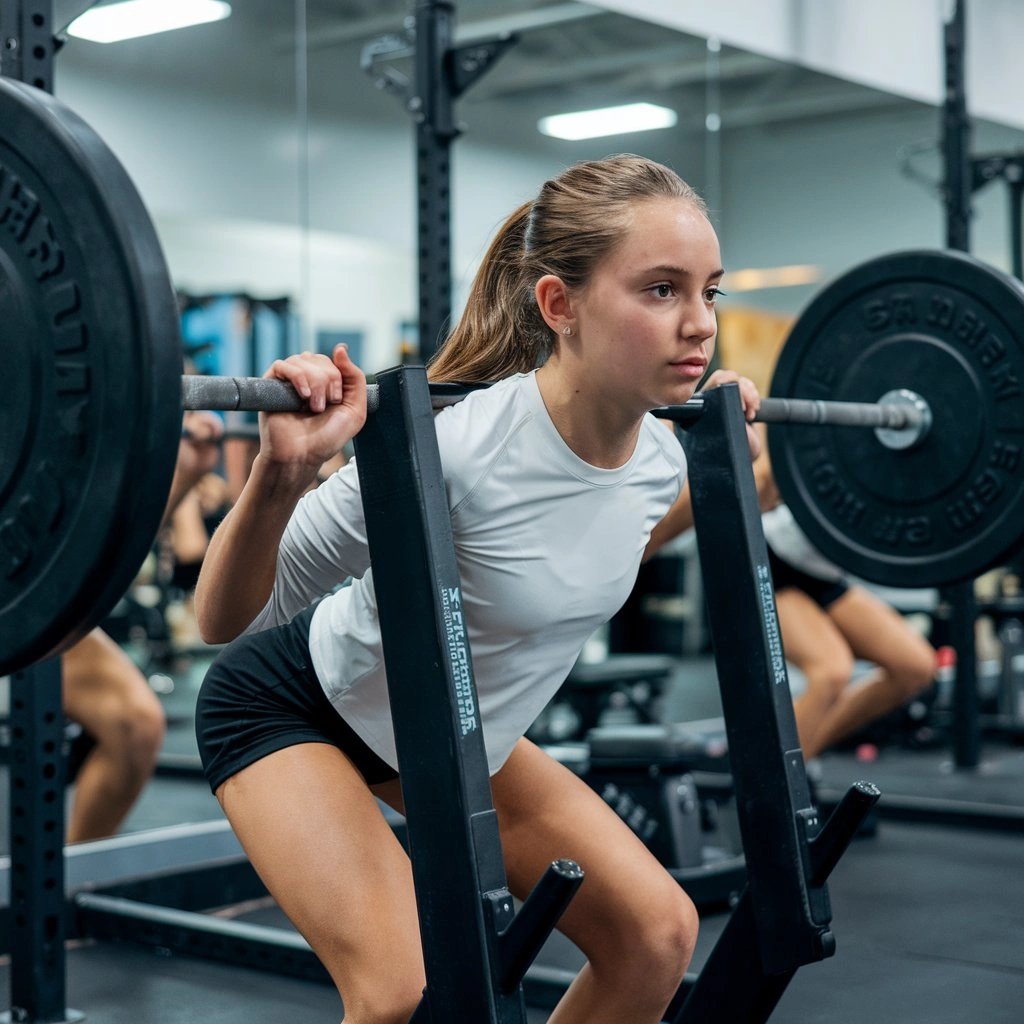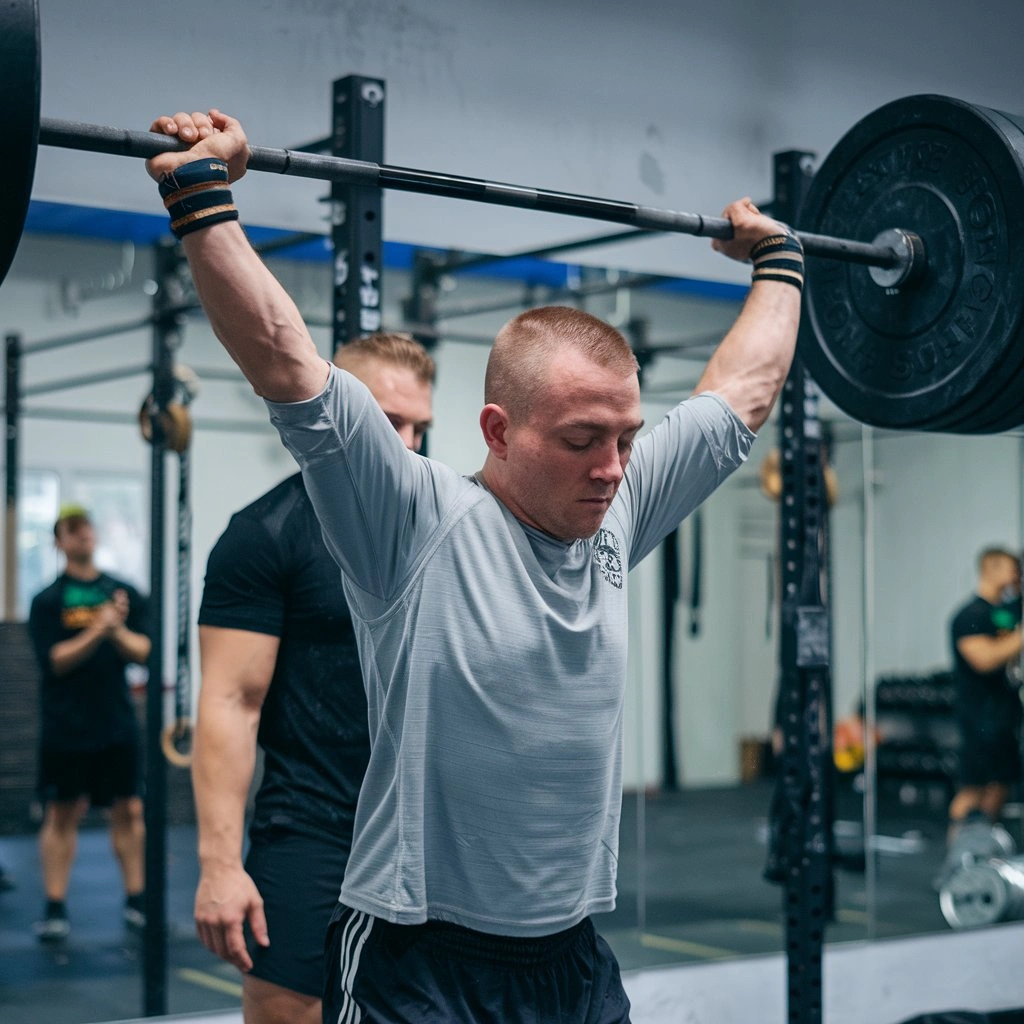In the world of weightlifting, efficiency, and safety are paramount. Every lift, every rep, and every adjustment counts towards progress and performance. Enter the unsung hero of the weight room: the barbell jack.
The barbell jack is often overlooked but indispensable. It changes how we load and unload Weight Plates. It makes our workouts smoother and guards against strain.
This guide is your gateway to unlocking barbell jacks’ full potential. We will understand their function and benefits. Then, we will master their use and maintenance. We are on a journey to lift your experience to new heights.
Are you an experienced lifter who wants to improve your training? Or are you a newcomer who wants to improve your lifting setup? This guide gives you the knowledge and tools to do so. These pages cover barbell jacks.
We explore their types, benefits, how to choose them, and how to use them. We show the path to efficiency and safety. We empower you to lift more, train smarter, and confidently reach your fitness goals.
Join us as we unravel the mysteries of barbell jacks. We will unveil their hidden potential. This will unlock the door to better performance and less risk. Let this guide be your trusted companion on your journey to mastery.
It will guide you through setup, operation, and upkeep. It does so with precision and clarity. As you step into the weight room, you have new knowledge and a barbell jack by your side.
May you lift with purpose, train with intention, and forge a path to greatness. Let’s maximize efficiency and safety, one rep at a time. We’ll do it with the aid of the invaluable Barbell Jack.
Understanding Barbell Jacks

What is a Barbell Jack?
Definition and Purpose
- A barbell jack is a specialized tool. It is used in weightlifting to make adding and removing weight plates from a barbell easier.
- Its main purpose is to lift the barbell a bit off the ground. This allows for easy adding or removing weight plates. It saves the need to lift the full weight of the barbell by hand.
How it Works
- Barbell jacks are a frame with a lifting mechanism. They are made to raise the barbell off the ground.
- The jack lifts the barbell. This creates space for adding or removing weights.
- Once you add or remove the weight plates, you disengage the jack. Then, the barbell rests securely on the ground with the new weight.
Types of Barbell Jacks
Traditional Lever-Style Jacks
- Traditional lever-style jacks have a lever. You operate it by hand to raise and lower the barbell.
- Operation:
The lifter puts the jack under the barbell. They push down on the lever to lift the barbell off the ground. Releasing the lever lowers the barbell back to the ground.
Hydraulic Jacks
- Description
Hydraulic jacks use hydraulic pressure. They lift and lower the barbell with little effort from the user. - Operation
The lifter activates the hydraulic system. It applies pressure to a piston or cylinder, lifting the barbell. Releasing the hydraulic pressure lowers the barbell back to the ground.
Screw-Style Jacks
- Description
Screw-style jacks feature a screw mechanism that is turned to raise or lower the barbell. - Operation
The lifter turns the screw. This causes it to extend or retract. This lifts or lowers the barbell.
Benefits of Using a Barbell Jack
Convenience and Efficiency
Ease of Loading and Unloading Weight Plates
- Barbell jacks make it easier to add or remove weight plates from a barbell.
- They lift the barbell off the ground. This creates plenty of space to easily add or remove weight plates. It saves time and effort during workouts.
Reduction of Strain on the Lifter’s Back and Joints
- Lifting heavy barbells by hand can strain the lifter’s back, shoulders, and joints. This raises the risk of injury or discomfort.
- Barbell jacks reduce this strain. They lift the barbell for the lifter. This cuts the need for bending or awkward lifting.
Safety
Minimization of Injury Risk During Weight Changes
- Barbell jacks have a key benefit. They cut the risk of injury when changing weights.
- Jacks lift the barbell off the ground in a controlled way. This minimizes the risk of dropping or mishandling it. It prevents injuries to the lifter or damage to equipment.
Stabilization of the Barbell During Plate Adjustments
- Barbell jacks stabilize the barbell. They do this while weight plates are added or removed.
- This stability keeps the barbell secure. It stops it from rolling or shifting. That could cause injury or imbalance during workouts.

Considerations for Choosing a Barbell Jack
Budget and Affordability
Cost Range for Different Types of Barbell Jacks
- Barbell jacks are available at various price points. Prices depend on their type, brand, and features.
- Traditional lever jacks are usually cheaper, costing $20 to $50. Hydraulic and screw jacks may cost $50 to $200 or more, depending on their quality and features.
Value Proposition and Long-Term Investment
- Consider the value proposition of each type of barbell jack and its cost.
- Cheaper options may offer basic features. But, a better jack has more features and is more durable. It may be of better value in the long term and perform better.
Durability and Quality
Materials and Construction
- Assess the materials used in the barbell jack. Also, assess its build quality.
- Look for jacks made from tough steel or aluminum. They should have reinforced parts. This makes them durable and stable during use.
Reviews and Recommendations from Other Lifters
- Read reviews and feedback from other lifters. They have used the barbell jack you’re considering.
- Pay attention to comments. They are about durability, ease of use, and satisfaction with the product. They help you gauge its quality and reliability.
How to Use a Barbell Jack
Setup and Assembly
Instructions for Assembling Different Types of Barbell Jacks
- Traditional Lever-Style Jacks
- Attach the lever arm to the base of the jack using the provided hardware.
- Ensure all components are securely tightened before use.
- Hydraulic Jacks
- Follow the manufacturer’s instructions to assemble the hydraulic jack. This includes attaching the pump and cylinder.
- Verify proper hydraulic fluid levels and test the jack’s operation before use.
- Screw-Style Jacks
- Extend the screw mechanism to its full length and secure it in place.
- Verify that all components are properly aligned and tightened before use.
Safety Precautions During Setup
- Ensure the barbell jack is placed on a stable, level surface before assembly.
- Follow manufacturer instructions carefully to avoid errors during setup.
- Double-check all connections and parts. Make sure they are secure before using the jack.
Loading and Unloading Weight Plates
Step-by-Step Guide for Using the Barbell Jack
- Position the barbell jack under the center of the barbell, aligning it with the sleeve.
- Use the lift to raise the barbell a bit off the ground. This makes space for plate adjustments.
- Add or remove weight plates from the barbell as needed. Take care to keep it balanced and stable.
- Disengage the lift to lower the barbell to the ground. Do this after adjusting the weight.
Tips for Efficient Plate Adjustments
- Load heavier-weight plates first to provide stability and balance to the barbell.
- Use collars to secure weight plates in place and prevent them from sliding during lifts.
- Use the barbell jack to adjust the weight plates. This ensures they are evenly distributed and aligned.

Maintenance and Care
Cleaning and Upkeep
Regular Cleaning to Prevent Rust and Corrosion
- Wipe down the barbell jack with a clean, dry cloth after each use to remove sweat, moisture, and debris.
- Use mild detergent or cleaner to remove stubborn dirt or residue. This is especially needed for hard-to-reach areas.
- Check the jack often for rust or corrosion. Pay close attention to metal and moving parts.
Lubrication of Moving Parts for Smooth Operation
- Put lubricant on the moving parts of the barbell jack. These parts include hinges, levers, and hydraulics. Do this as the manufacturer recommends.
- Use a high-quality lubricant that is suitable for the specific type of jack and won’t attract dirt or dust.
Storage
Proper Storage to Prevent Damage and Prolong Lifespan
- Store the barbell jack in a dry room. Keep it from moisture and rust.
- Don’t put heavy objects on the jack. Also, keep it away from extreme temperatures. They could damage it or hurt how it works.
- If you can, take apart the jack for storage. This will save space and cut the risk of damage during transportation or handling.
Recommendations for Storing the Barbell Jack When Not in Use
- Store the barbell jack upright. This prevents bending or damage to the frame or parts.
- Consider using a cover or case to shield the jack from dust, dirt, and other things. Do this when it’s not in use.
- Keep the jack away from humid areas. Moisture can speed up rust and corrosion.
Conclusion
In the world of weightlifting, efficiency, safety, and convenience are paramount. We’re finishing our look at barbell jacks. They play an invaluable role in improving our lifting and boosting our performance.
In this guide, we’ve looked deeply into the mechanics, benefits, and care of barbell jacks. We’ve also covered the things to consider when using them.
We’ve given you the knowledge and skills to use these tools. We covered their purpose, types, use, and care. Now, you can confidently and easily add them to your weightlifting routine.
Barbell jacks offer many benefits. They speed up the loading and unloading of weights. They also reduce strain on the lifter’s body and the risk of injury during weight changes. Their convenience, efficiency, and safety make them essential in the weight room.
They empower lifters of all levels to push their limits and reach their fitness goals. When choosing a barbell jack, you must consider factors. These include budget, durability, and quality.
They ensure you invest in a tool that meets your needs and lasts. Prioritize setup, maintenance, and storage. Doing so can prolong your barbell jack’s life. It will let you enjoy its benefits for years.
As you start lifting with a barbell jack, may you lift with purpose. Train with intention. Forge a path to strength and excellence. Let the lessons and insights from this guide be your guiding light. They will propel you toward new heights of achievement and success.
Frequently Asked Questions (FAQ) about Barbell Jacks
What is a barbell jack, and how does it work
- A barbell jack is a specialized tool. It is used in weightlifting to make it easier to put on and take off weight plates from a barbell. It works by lifting the barbell off the ground. This creates space for easy adding or removing of weight plates. It reduces strain on the lifter’s back and joints.
What are the different types of barbell jacks available?
- Barbell jacks come in various types. These include lever-style, hydraulic, and screw-style jacks. Each type operates differently. But, they serve the same purpose: lifting the barbell to adjust the weight plates.
What are the benefits of using a barbell jack?
- Barbell jacks offer many benefits. They make it easy and fast to load and unload weight plates. They reduce strain on the lifter’s body and lower the risk of injury during weight changes. They also steady the barbell during plate adjustments.
How do I choose the right barbell jack for my needs?
- When choosing a barbell jack, consider factors such as budget, durability, and quality. Find the cost range for different jacks. Look at their materials and construction for durability. Read reviews from other lifters to judge quality and reliability.
Are there any safety precautions I should take when using a barbell jack?
- Yes, safety precautions are essential when using a barbell jack. Put the jack on a stable surface during setup. Check all connections and parts before use. Follow proper lifting to avoid injury.
How do I maintain and care for my barbell jack?
- Regular cleaning and oiling are crucial. They prevent rust and corrosion and keep things running smoothly. Storing the jack in a dry, climate-controlled space can also lengthen its life. It will also protect it from damage when not in use.
- Can I use a barbell jack with any type of barbell?
- Barbell jacks are designed to be compatible with most standard and Olympic barbells. However, it’s essential to ensure the jack fits the barbell. They must match in size and weight capacity. This matching prevents issues during use.

